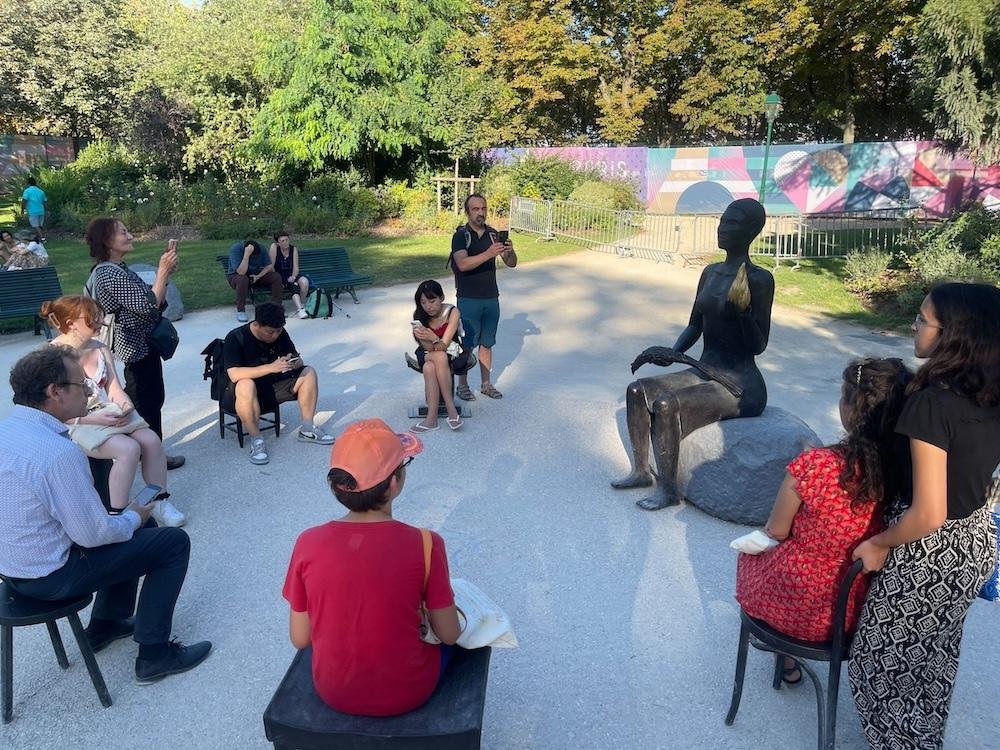family
As the Paris Olympics Conclude, Conversations on Gender Equity and Inclusivity Ignite

The Paris Games have sparked vital conversations about inclusivity, highlighted by this year’s Paralympics’ mascot and the establishment of the first nursery in the Olympic Village.
Although the Games are nearing completion, the dialogue continues. Paris has long been significant for women’s history, from Joan of Arc to Marie Curie. This year’s Olympics achieved full gender parity for the first time, representing a notable advancement since women were first granted the opportunity to compete in 1900.
Initially, women made up just 2.2% of the athletes, competing only in select sports like tennis and sailing. Fast forward to now, and the Games feature 20 mixed-gender events and 152 competitions exclusively for women, including triathlon—recently surrounded by controversy due to swimming conditions in the Seine River.
“That’s incredible,” remarked Team USA triathlon athlete Kirsten Kasper, expressing pride in this achievement. “It’s amazing to see how this has developed even from Tokyo three years ago.” For Kasper, qualifying for the Paris Games fulfilled a long-held dream, although she is now contemplating her next steps as she observes peers balancing family and competition.
Despite the progress, challenges remain for women in sports. “The sweep of 125 years is a story of progress, but it’s not full equity yet,” explained Victoria Jackson, a clinical associate professor of history at Arizona State University. She emphasized that while the Olympics ensure gender parity, they still operate within a binary system, which often leads to unnecessary scrutiny of female athletes.
Other pressing issues persist, such as unequal pay, varying opportunities for medals, and biases surrounding motherhood and athlete uniforms. Although this year’s achievements are commendable, they expose a larger conversation regarding women’s rights in sports.
Enhancing this dialogue is “Salon,” an Olympic sculpture commissioned by artist Alison Saar. Located near the Champs-Élysées in the Charles Aznavour Garden, it symbolizes unity and inclusivity while inviting people from diverse backgrounds to gather and engage.
“Salon represents the idea of being generous and open to others unlike yourself,” Saar noted, highlighting the importance of embracing diversity. At the sculpture, a larger-than-life Black woman of African descent welcomes visitors, her stationary presence encouraging pauses and reflections.
Forty-three-year-old Victoria Guerard, who visited Salon with her children, remarked on the significance of the artwork. “The freedom to come here, the tolerance, the integration of the continents, for me, is paramount,” she shared in Spanish, emphasizing that the piece embodies collective human experiences.
Salon serves as a cultural crossroads, facilitating spontaneous connections among different worlds. Saar hopes visitors leave with a greater appreciation for diversity, embodying the true spirit of the Olympics.
Heading towards Los Angeles 2028, the legacy of the Paris Games will continue to inspire inclusivity discussions within sports. With “Salon” standing as a symbol of unity and diversity, it reinforces the notion that everyone deserves a seat at the table.


















